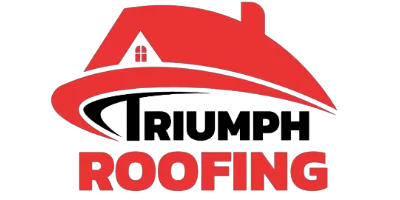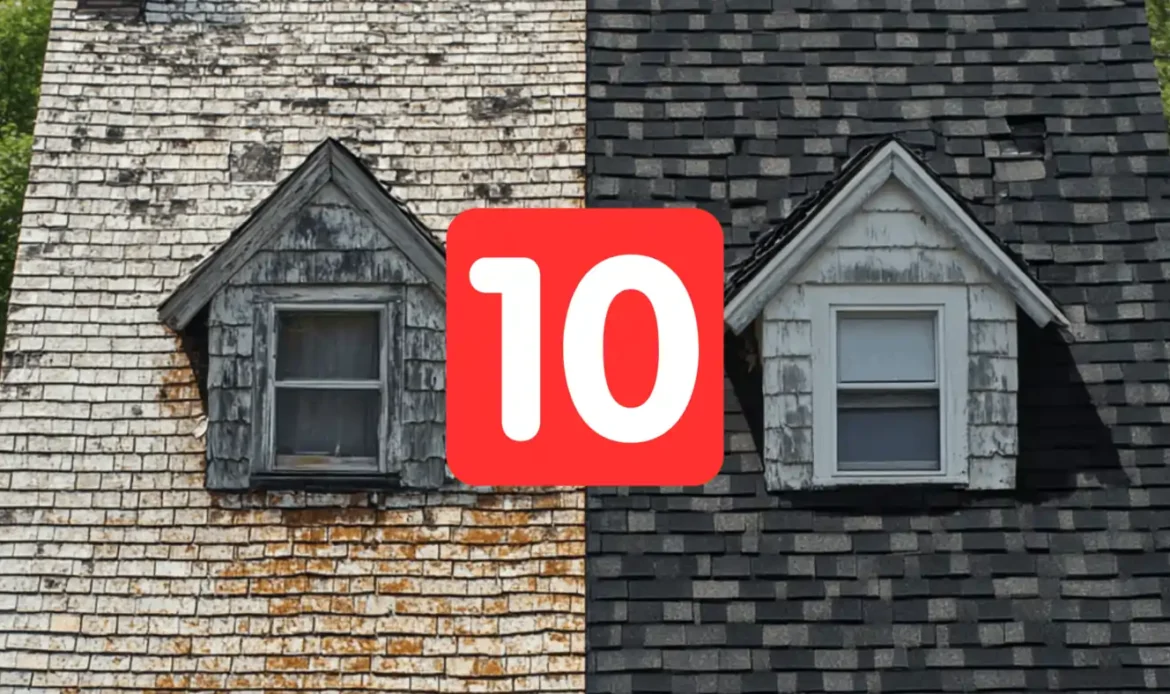“The most common roofing problems in Charlotte often stem from harsh weather, aging materials, and poor installation methods—addressing them swiftly not only prevents further damage but also extends your roof’s overall lifespan.”
Charlotte NC, is known for its variable climate—scorching summers, high humidity, thunderstorms, and even the occasional winter freeze. These conditions can take a toll on your roof, leading to issues that range from minor inconveniences to significant structural complications. Whether you need a quick roof repair, are considering a complete roof replace option, or planning a roof installation for a new home, understanding the most common roofing problems and how to fix them can save you time, money, and potential headaches down the road. Below, we’ll delve into the top 10 roof issues Charlotte homeowners encounter and how you can handle them—yourself or with professional help from companies like Triumph Roofing.

1. Storm Damage and Hail Impact
Charlotte often faces sudden storms and even hail events. These weather conditions can leave dents, holes, or cracks in your roof.
Signs to Look For:
- Dented or bruised shingles
- Granule loss on shingles
- Torn or missing shingle pieces
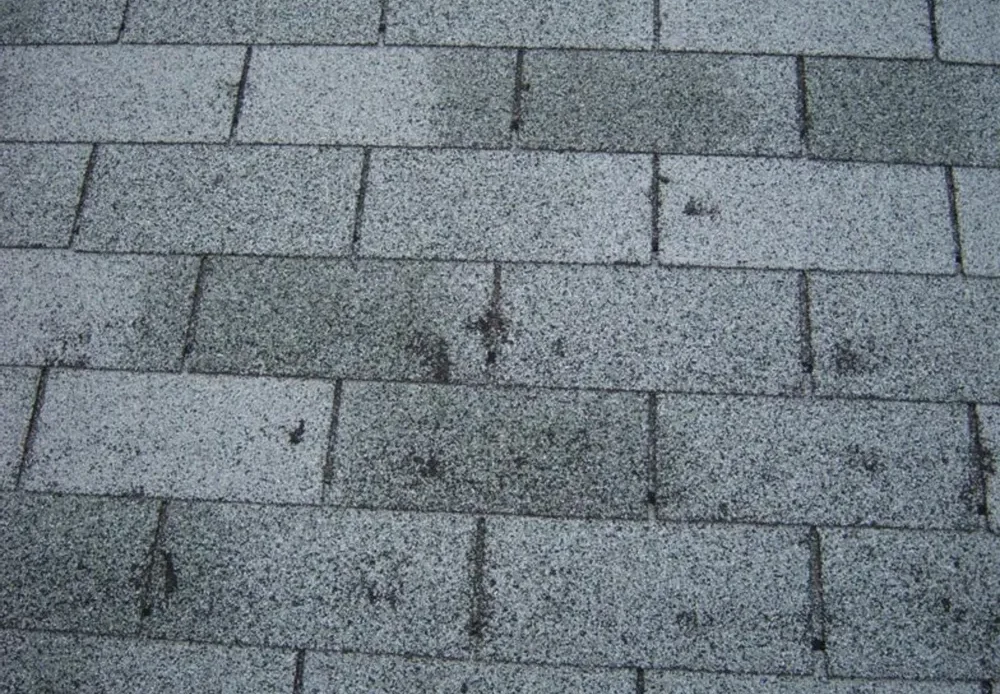
How to Fix It Yourself:
- Inspect Immediately: After a storm, assess your roof from the ground with binoculars or use a sturdy ladder if you’re comfortable. Look for obvious signs of damage like missing shingle sections or visible tears.
- Replace Damaged Shingles: If only a few shingles are affected, carefully remove them and install matching new ones. Make sure the new shingles align properly and are securely fastened.
Pro Tip: For large hail impacts or significant tears, it might be safer and more effective to contact Triumph Roofing for a thorough roof repair. They have the expertise to assess underlying issues that might not be visible at first glance.
2. Leaks and Moisture Infiltration
Roof leaks are one of the most common issues homeowners face. Charlotte’s humidity and frequent rainfall can exacerbate even the smallest leaks, leading to moisture buildup in your attic or upper floors.
Signs to Look For:
- Water stains on ceilings or walls
- Musty odors near the attic
- Discoloration or bulging paint
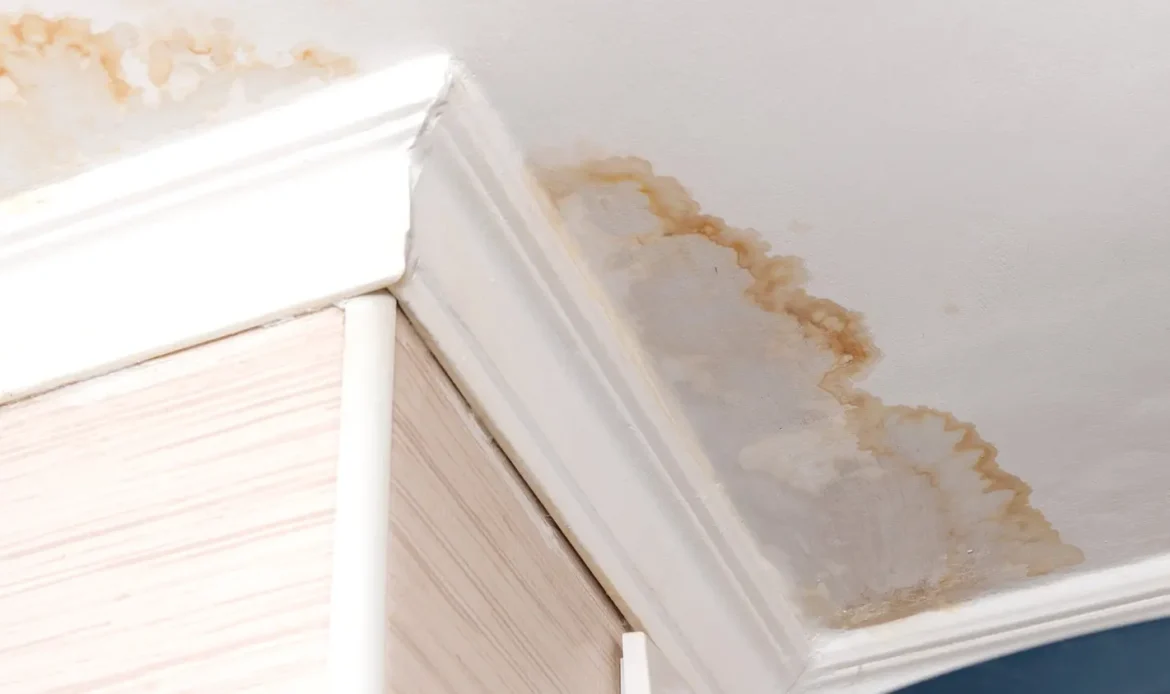
How to Fix It Yourself:
- Identify the Source: Trace the water stain in your attic to find where the leak enters. Remember, water can travel along rafters before dripping onto your ceiling.
- Patch Small Holes: For tiny holes, use roof patching compounds or self-adhesive waterproof tape to create a temporary seal.
- Replace Severely Damaged Areas: If the leak source is a damaged vent boot or flashing, swap it out with a new one. Make sure the replacement is securely sealed to prevent future leaks.
Pro Tip: If multiple leaks are present, it may point to a broader problem that could call for a more significant roof repair or even a roof replace operation. In such cases, professional assessment is recommended.
3. Poor or Inadequate Ventilation
Proper ventilation is crucial for maintaining a healthy roof and attic space. In a city like Charlotte, where humidity levels can spike, inadequate attic airflow can trap moisture and heat, shortening the lifespan of your roof.
Signs to Look For:
- Warped or curled shingles
- Excessive attic heat
- Mold or mildew in the attic
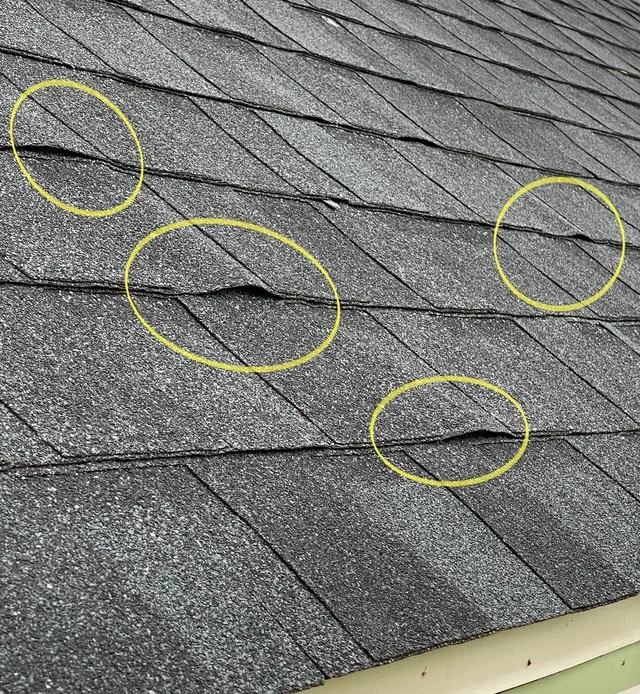
How to Fix It Yourself:
- Install or Clear Vents: Check ridge vents, soffit vents, and any attic fans to ensure they’re not blocked. Clear away debris or insulation that might be obstructing airflow.
- Add Ventilation Systems: If your roof lacks sufficient ventilation, you may install additional vents or even solar-powered attic fans to improve air circulation.
Pro Tip: Designing a balanced ventilation system often goes beyond a basic DIY. A professional roof installation expert, such as Triumph Roofing, can assess the attic’s layout and recommend the right type and number of vents.
4. Damaged or Worn Shingles
Over time, shingles naturally wear out. Charlotte’s hot summers and changing seasons accelerate this process, making shingle damage one of the most frequent reasons for roof repair inquiries.
Signs to Look For:
- Bald patches where granules are missing
- Cracked or buckled shingles
- Shingles curling at the edges
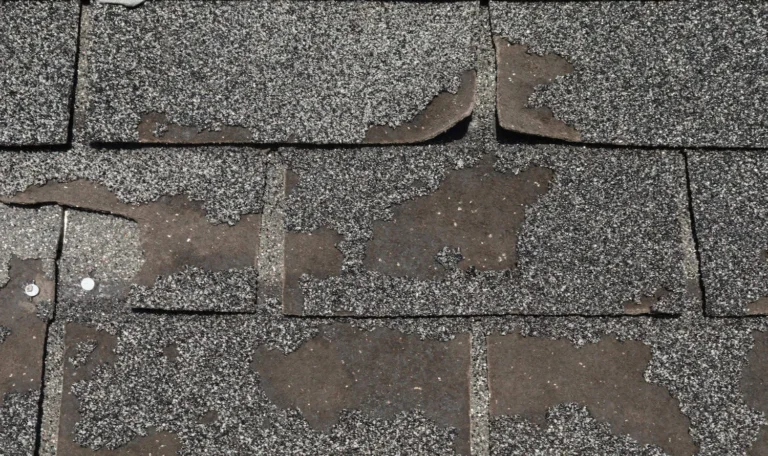
How to Fix It Yourself:
- Regular Inspection: Check your roof at least twice a year (especially after harsh weather) for any deteriorating shingles.
- Shingle Replacement: Carefully lift the damaged shingle, remove nails, and slip a new shingle in its place. Secure it with roofing nails and seal around the edges with roofing cement.
Pro Tip: If large sections are affected, or your shingles are reaching the end of their lifespan (typically 20-25 years for asphalt), it might be time to consider a roof replace. Triumph Roofing can evaluate if a partial or full replacement is needed.
5. Flashing Failures
Flashing is the thin metal strip installed around skylights, chimneys, vents, or any penetration through the roof. If the flashing is corroded or improperly installed, water can seep underneath your shingles.
Signs to Look For:
- Rust or corrosion on metal
- Water stains near chimneys or skylights
- Loose or bent flashing edges
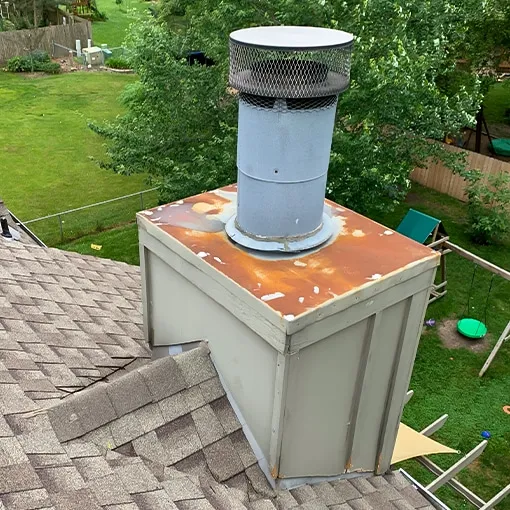
How to Fix It Yourself:
- Secure Loose Flashing: Use roofing nails or screws to fasten the flashing firmly. Apply roofing cement around the edges for extra protection.
- Replace Severely Damaged Flashing: If the flashing is badly rusted or bent, remove it carefully and install a new piece that fits snugly against the penetration.
Pro Tip: Proper flashing installation is often more complicated than it appears. A qualified roof installation team like Triumph Roofing can guarantee your flashing is tight and weatherproof, preventing leaks and ensuring longevity.
6. Clogged Gutters and Downspouts
Neglected gutters can accumulate leaves, dirt, and other debris, causing water to back up onto the roof. Over time, this can lead to shingle damage, rot, and eventual leaks.
Signs to Look For:
- Standing water in gutters
- Water overflowing during rain
- Sagging or detached gutter sections

How to Fix It Yourself:
- Regular Cleaning: At least twice a year—particularly after fall—clean out gutters using a small scoop or a garden hose.
- Install Gutter Guards: Mesh or screen gutter guards prevent leaves and debris from accumulating, reducing how often you need to clean.
- Check Downspouts: Ensure water flows freely through the downspouts. If not, flush them with a hose or use a plumber’s snake to clear blockages.
Pro Tip: Persistent clogs can weaken fascia boards and even damage your roof structure. If you notice severe water damage around the gutter line, a more in-depth roof repair might be necessary.
7. Pooling or Standing Water
Flat or low-sloped roofs, common in certain Charlotte architectural styles, can sometimes have inadequate drainage. This leads to standing water and increases the risk of leaks, mold, and structural damage.
Signs to Look For:
- Water remaining on the roof more than 48 hours after a rain
- Algae or moss growth in puddled areas
- Worn areas on the membrane or surface
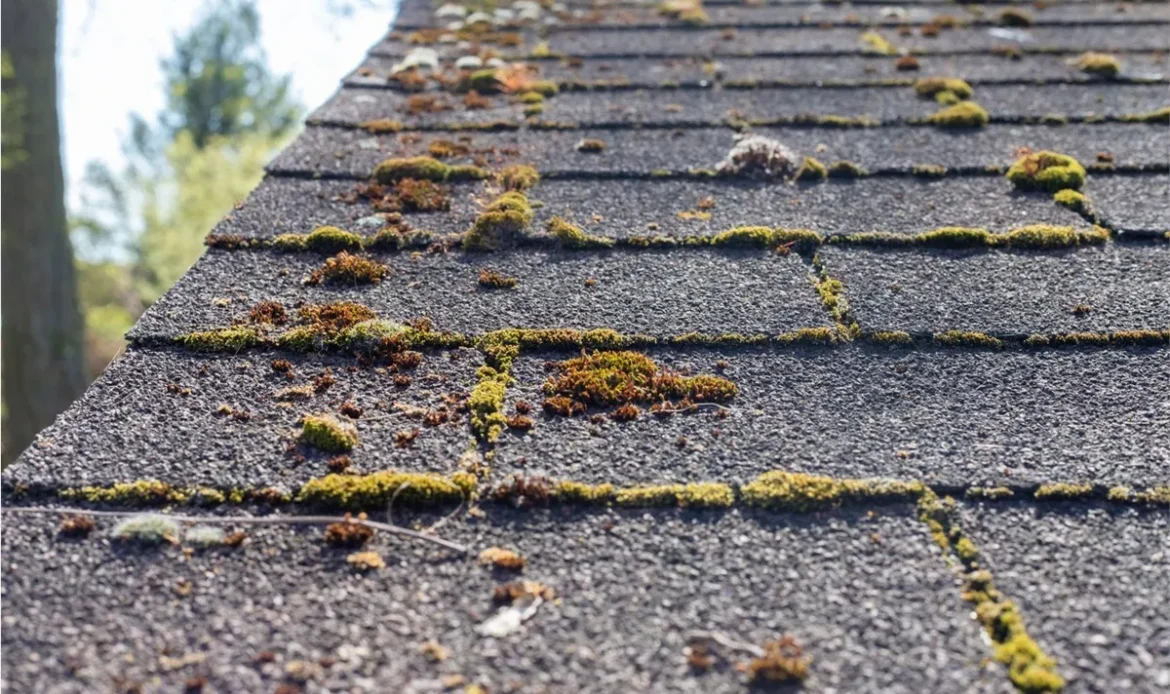
How to Fix It Yourself:
- Check Slope and Drainage: Ensure your roof slopes toward drains or guttering systems. If not, you might need to add extra drainage points or adjust the slope.
- Clear Blockages: Remove debris blocking scuppers, drains, or gutters.
- Patch Membrane: If you have a membrane-based roof, use roofing patches or sealants on worn or compromised sections.
Pro Tip: If standing water is a recurring issue, consult a professional about re-pitching the roof or upgrading drainage solutions. Triumph Roofing can install or redesign drainage to effectively combat pooling.
8. Moss, Algae, and Fungal Growth
Charlotte’s humidity fosters the growth of moss, algae, and fungus. These organisms can hold moisture against the roof surface, contributing to shingle deterioration and leaks.
Signs to Look For:
- Green or black streaks on shingles
- Moss clumps, especially in shaded areas
- Degraded, crumbling shingle edges

How to Fix It Yourself:
- Gentle Cleaning: Use a 50/50 mixture of water and bleach. Apply it to the affected areas, let it soak, and gently rinse off. Avoid high-pressure washing as it can damage shingles.
- Zinc or Copper Strips: Installing metal strips near your roof ridge can help prevent moss and algae buildup.
Pro Tip: For widespread growth that’s damaging your roof, a professional roof repair might be required. Experts can safely remove mold and moss without harming the shingles or underlayment.
9. Improper or DIY Installation Mistakes
While many homeowners try to save money by handling roof installation themselves, mistakes in alignment, flashing, or material choice can lead to costly repairs down the line.
Signs to Look For:
- Shingles not lying flat
- Exposed nail heads
- Flashing gaps or misaligned ridge caps
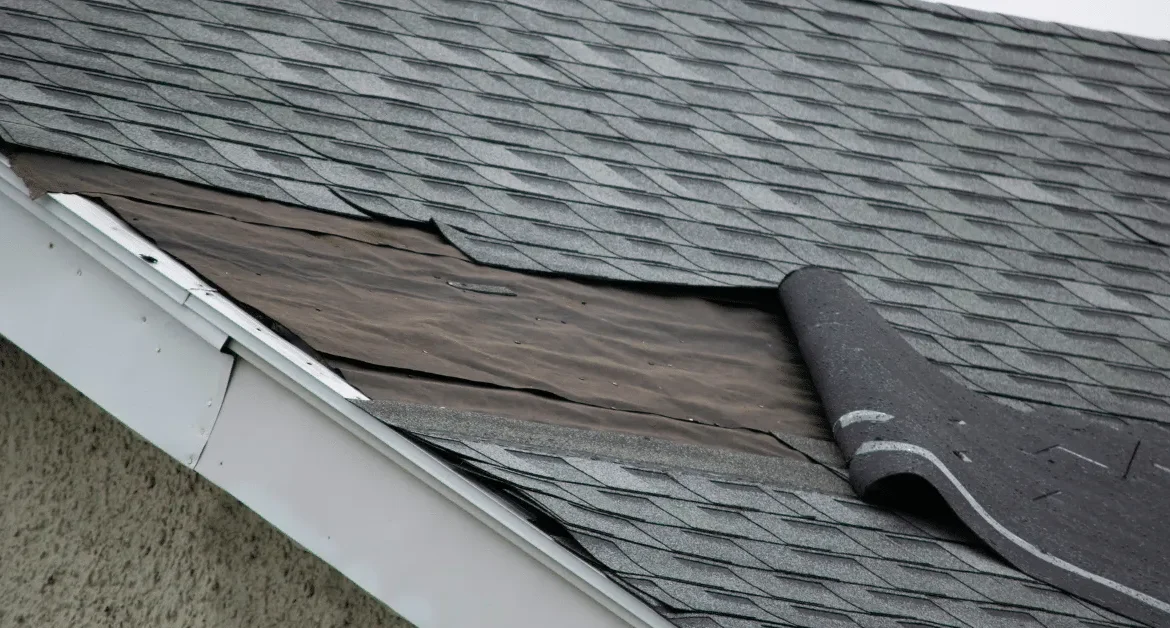
How to Fix It Yourself:
- Reevaluate Your Work: Identify areas with crooked or improperly affixed shingles or flashing.
- Follow Manufacturer Instructions: Every shingle type has specific guidelines. Make sure you’re nailing at the correct location and spacing.
- Use Proper Tools and Materials: The correct nails, underlayment, and adhesives go a long way in preventing future issues.
Pro Tip: If problems persist or multiple areas show incorrect installation, consider hiring a professional for a more thorough roof repair or partial roof replace. Triumph Roofing can efficiently correct mistakes and ensure longevity.
10. Age and Wear Over Time
No roof lasts forever. Asphalt shingles typically last between 20-25 years, while metal roofs can go up to 50 years or more. If your roof is near or past its expected lifespan, you may notice multiple issues emerging at once.
Signs to Look For:
- Frequent leaks
- Missing or curling shingles
- Visible sagging in the roofline
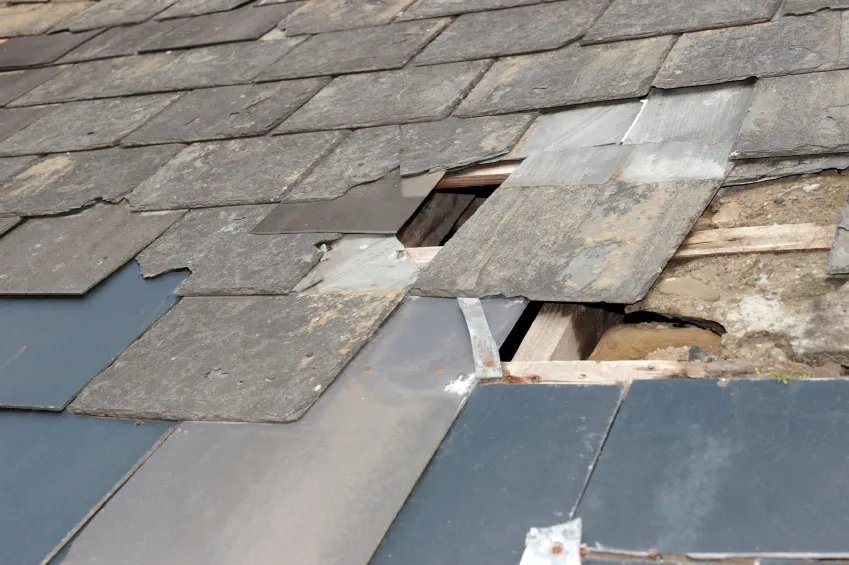
How to Fix It Yourself:
- Spot Repairs: If only a few shingles or small areas are affected, you can carry out targeted roof repair to extend the life by a couple of years.
- Consider a Full Replacement: An older roof nearing the end of its service life may benefit more from a complete roof replace. While this is a larger investment, it offers peace of mind and can enhance your property value.
Pro Tip: Consult with Triumph Roofing for an expert assessment on whether a total roof replace is needed. Professionals can also advise on material options like asphalt, metal, or tile, optimizing your roof for Charlotte’s climate.
Conclusion
Maintaining a sturdy, healthy roof in Charlotte demands awareness of the local weather’s impact and regular upkeep. From storm damage to improperly installed flashing, each issue presents unique challenges—but also practical DIY solutions if the damage is minor. For larger problems or if you find the work too dangerous or complex, don’t hesitate to seek professional roof repair, roof replace, or roof installation services. A reputable company like Triumph Roofing can offer detailed inspections, superior workmanship, and peace of mind.
Keeping an eye on your roof’s health—especially in Charlotte’s unpredictable climate—is essential for safeguarding your home.
By addressing minor issues quickly and tackling major problems with the right tools or professional help, you’ll ensure your roof remains solid and leak-free for years to come.
